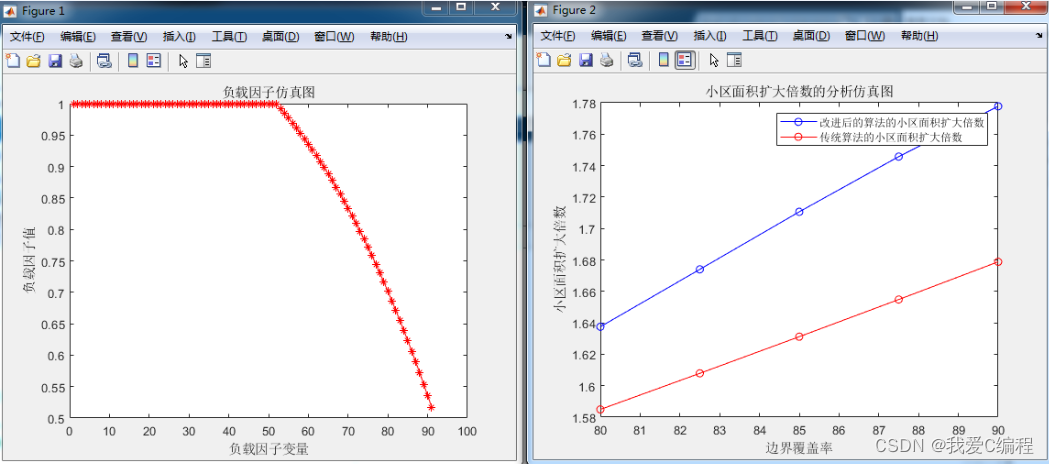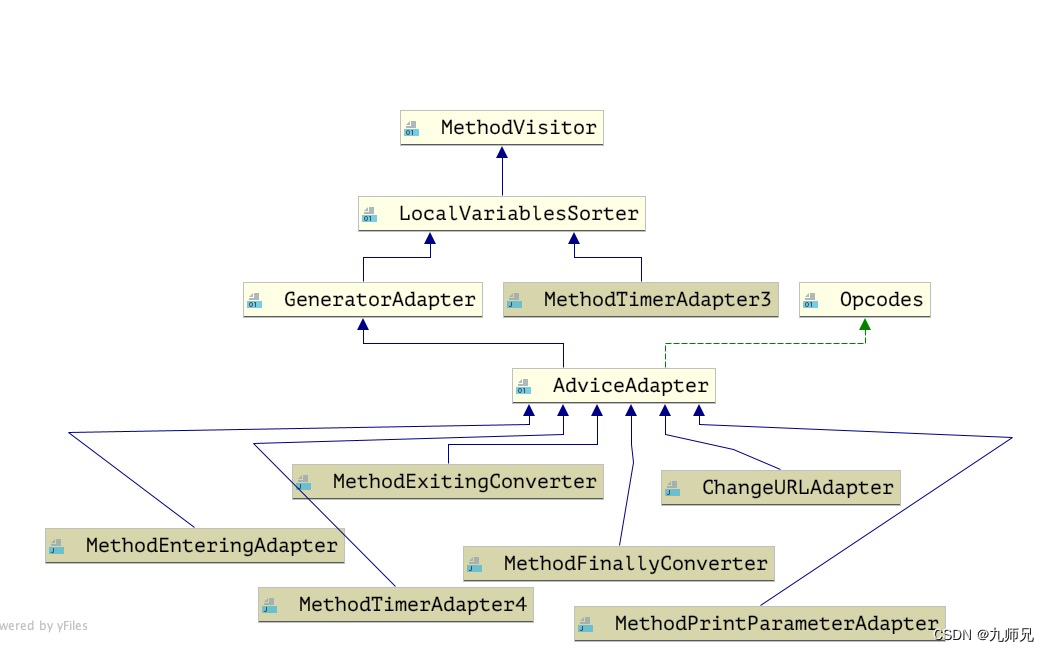AOP介绍
SpringAOP核心概念
上述中已经出现的关键词有Advice(顶级的通知类/拦截器)、MethodInvocation(方法连接点)、MethodInterceptor(方法拦截器)
SpringAOP在此基础上又增加了几个类,丰富了AOP定义及使用概念,包括
Advisor:包含通知(拦截器),Spring内部使用的AOP顶级接口,还需要包含一个aop适用判断的过滤器,考虑到通用性,过滤规则由其子接口定义,例如IntroductionAdvisor和PointcutAdvisor,过滤器用于判断bean是否需要被代理
Pointcut: 切点,属于过滤器的一种实现,匹配过滤哪些类哪些方法需要被切面处理,包含一个ClassFilter和一个MethodMatcher,使用PointcutAdvisor定义时需要
ClassFilter:限制切入点或引入点与给定目标类集的匹配的筛选器,属于过滤器的一种实现。过滤筛选合适的类,有些类不需要被处理
MethodMatcher:方法匹配器,定义方法匹配规则,属于过滤器的一种实现,哪些方法需要使用AOP
AOP使用方法
配置Advisor
这一步对SpringAOP使用者很关键,决定了我们如何定义配置Advisor,即SpringAOP和Aspectj,实际使用配置AOP方式有多种,还区分xml和注解,最终转化处理时我认为只分为这两种。其中Aspectj方式配置AOP应该是最常见应用最广泛的用法了。
前面提到Aspectj是一种静态代理,而SpringAOP是动态代理。但Aspectj的一套定义AOP的API非常好,直观易用。所以Spring引入了Aspectj,但只使用部分注解用来定义配置AOP,在获取Advisor阶段用来生成Advisor,与后面的代理生成和代理增强执行无关!
最少需要定义三个类,一个Advisor的实现类,一个Advice实现类(拦截器),一个aop适配过滤器(这里使用的Advisor为派生的PointcutAdvisor ,需要定义PointCut切点)。可以增加一个注解用于AOP埋点,需要给bean哪个方法进行切面,则方法上加上该注解。
Advisor:MyAdvisor,返回一个Advice,
Advice:MyInterceptAdvice,拦截器,invoke方法中可以添加切面逻辑代码
PointCut: MyPointCut,切点,匹配过滤出需要切面的类及方法,查找方法头注解了MyAnnotation的方法。
埋点注解:MyAnnotation
MyAdvisor.java
@Component
public class MyAdvisor implements PointcutAdvisor {
@Override
public Advice getAdvice() {
return new MyInterceptAdvice();
}
@Override
public boolean isPerInstance() {
return false;
}
@Override
public Pointcut getPointcut() {
return new MyPointCut();
}
}
MyInterceptAdvice.java
public class MyInterceptAdvice implements MethodInterceptor {
@Override
public Object invoke(MethodInvocation invocation) throws Throwable {
System.out.println("go go go MyAdvisor process!!!");
return invocation.proceed();
}
}
MyPointCut.java
public class MyPointCut implements Pointcut {
@Override
public ClassFilter getClassFilter() {
return new MyClassFilter();
}
@Override
public MethodMatcher getMethodMatcher() {
return new MyMethodMatcher();
}
private class MyMethodMatcher implements MethodMatcher {
@Override
public boolean matches(Method method, Class<?> targetClass) {
Annotation[] annoArray = method.getDeclaredAnnotations();
if (annoArray == null || annoArray.length == 0) {
return false;
}
for (Annotation annotation : annoArray) {
if (annotation.annotationType() == MyAnnotation.class) {
return true;
}
}
return false;
}
@Override
public boolean isRuntime() {
return false;
}
@Override
public boolean matches(Method method, Class<?> targetClass, Object... args) {
return false;
}
}
private class MyClassFilter implements ClassFilter {
@Override
public boolean matches(Class<?> clazz) {
return AnnotationUtils.isCandidateClass(clazz, MyAnnotation.class);
}
}
}
再定义一个测试类
@Component
public class TestService {
@MyAnnotation
public void test() {
System.out.println("test!");
}
}
运行方法测试发现aop生效
使用Aspectj间接配置Advisor
一个类就可以了,定义切点和增强方法
@Aspect
@Component
public class AopConfig {
@Pointcut("execution(* cn.nec.aop.cnnecaop.service.*.*(..))")
public void pointCut() {}
@Around("pointCut()")
public Object around(ProceedingJoinPoint joinPoin) {
System.out.println("go go go MyAspectJ process!!!");
Object obj = null;
try {
obj = joinPoin.proceed();
} catch (Throwable throwable) {
throwable.printStackTrace();
}
return obj;
}
}
注解的形式,实际上最终还是被封装成Advice接口
注解AOP的几个执行时机
- @Before
- 前置通知:目标方法之前执行
- MethodBeforeAdviceInterceptor
@Override
public Object invoke(MethodInvocation mi) throws Throwable {
this.advice.before(mi.getMethod(), mi.getArguments(), mi.getThis());
return mi.proceed();
}
- @After
- 后置通知:目标方法之后执行(始终执行)
- AspectJAfterAdvice
@Override
public Object invoke(MethodInvocation mi) throws Throwable {
try {
return mi.proceed();
}
finally {
invokeAdviceMethod(getJoinPointMatch(), null, null);
}
}
- @AfterReturning
- 返回通知:执行方法结束前执行(异常不执行)
- AfterReturningAdviceInterceptor
@Override
public Object invoke(MethodInvocation mi) throws Throwable {
Object retVal = mi.proceed();
this.advice.afterReturning(retVal, mi.getMethod(), mi.getArguments(), mi.getThis());
return retVal;
}
- @AfterThrowing
- 异常通知:出现异常的时候执行
- AspectJAfterThrowingAdvice
@Override
public Object invoke(MethodInvocation mi) throws Throwable {
try {
return mi.proceed();
}
catch (Throwable ex) {
if (shouldInvokeOnThrowing(ex)) {
invokeAdviceMethod(getJoinPointMatch(), null, ex);
}
throw ex;
}
- @Around
- 环绕通知:环绕目标方法执行(执行前后都在一个方法中自定义)
- AspectJAroundAdvice
@Override
public Object invoke(MethodInvocation mi) throws Throwable {
if (!(mi instanceof ProxyMethodInvocation)) {
throw new IllegalStateException("MethodInvocation is not a Spring ProxyMethodInvocation: " + mi);
}
ProxyMethodInvocation pmi = (ProxyMethodInvocation) mi;
ProceedingJoinPoint pjp = lazyGetProceedingJoinPoint(pmi);
JoinPointMatch jpm = getJoinPointMatch(pmi);
return invokeAdviceMethod(pjp, jpm, null, null);
}
around方法中,不会有自动执行process的逻辑。因此,需要在自己定义的方法中自行执行
AOP原理分析
AOP入口
SpringAOP是对bean的一种扩展,是后处理器的一种处理。Spring bean在 执行初始化方法前后,会使用所有BeanPostProcessor对bean进行特殊处理。Aop代理即是一种对bean特殊处理。
protected Object initializeBean(String beanName, Object bean, @Nullable RootBeanDefinition mbd) {
if (System.getSecurityManager() != null) {
AccessController.doPrivileged((PrivilegedAction<Object>) () -> {
invokeAwareMethods(beanName, bean);
return null;
}, getAccessControlContext());
}
else {
invokeAwareMethods(beanName, bean);
}
Object wrappedBean = bean;
if (mbd == null || !mbd.isSynthetic()) {
wrappedBean = applyBeanPostProcessorsBeforeInitialization(wrappedBean, beanName);
}
try {
invokeInitMethods(beanName, wrappedBean, mbd);
}
catch (Throwable ex) {
throw new BeanCreationException(
(mbd != null ? mbd.getResourceDescription() : null),
beanName, "Invocation of init method failed", ex);
}
if (mbd == null || !mbd.isSynthetic()) {
wrappedBean = applyBeanPostProcessorsAfterInitialization(wrappedBean, beanName);
}
return wrappedBean;
}
此时用于代理的BeanPostProcessor登场,对需要代理的bean进行代理
对应的BeanPostProcessor为AbstractAutoProxyCreator的子类,执行AbstractAutoProxyCreator.postProcessAfterInitialization()。
@Override
public Object postProcessAfterInitialization(@Nullable Object bean, String beanName) {
if (bean != null) {
Object cacheKey = getCacheKey(bean.getClass(), beanName);
if (this.earlyProxyReferences.remove(cacheKey) != bean) {
return wrapIfNecessary(bean, beanName, cacheKey);
}
}
return bean;
}
earlyProxyReferences中存放的是循环依赖提前暴露bean生成的代理
注意!如果earlyProxyReferences已经存在了这个bean,代表该bean已经被提前暴露生成过了代理,那么不再进行重复代理!
紧接着进入wrapIfNecessary
/**
* Wrap the given bean if necessary, i.e. if it is eligible for being proxied.
* @param bean the raw bean instance
* @param beanName the name of the bean
* @param cacheKey the cache key for metadata access
* @return a proxy wrapping the bean, or the raw bean instance as-is
*/
protected Object wrapIfNecessary(Object bean, String beanName, Object cacheKey) {
if (StringUtils.hasLength(beanName) && this.targetSourcedBeans.contains(beanName)) {
return bean;
}
//advisedBeans的对应value为fasle,则代表不需要代理
if (Boolean.FALSE.equals(this.advisedBeans.get(cacheKey))) {
return bean;
}
//对于本身就是advisorBean和需要跳过的bean不进行代理
if (isInfrastructureClass(bean.getClass()) || shouldSkip(bean.getClass(), beanName)) {
this.advisedBeans.put(cacheKey, Boolean.FALSE);
return bean;
}
// Create proxy if we have advice.
// 获取拦截器,及Advisor,看样子也可以获取Advice!
Object[] specificInterceptors = getAdvicesAndAdvisorsForBean(bean.getClass(), beanName, null);
if (specificInterceptors != DO_NOT_PROXY) {
this.advisedBeans.put(cacheKey, Boolean.TRUE);
// 生成代理对象
Object proxy = createProxy(
bean.getClass(), beanName, specificInterceptors, new SingletonTargetSource(bean));
this.proxyTypes.put(cacheKey, proxy.getClass());
return proxy;
}
this.advisedBeans.put(cacheKey, Boolean.FALSE);
return bean;
}
可以看到代理生成分了两步,获取AdvicesAndAdvisors,然后生成代理对象
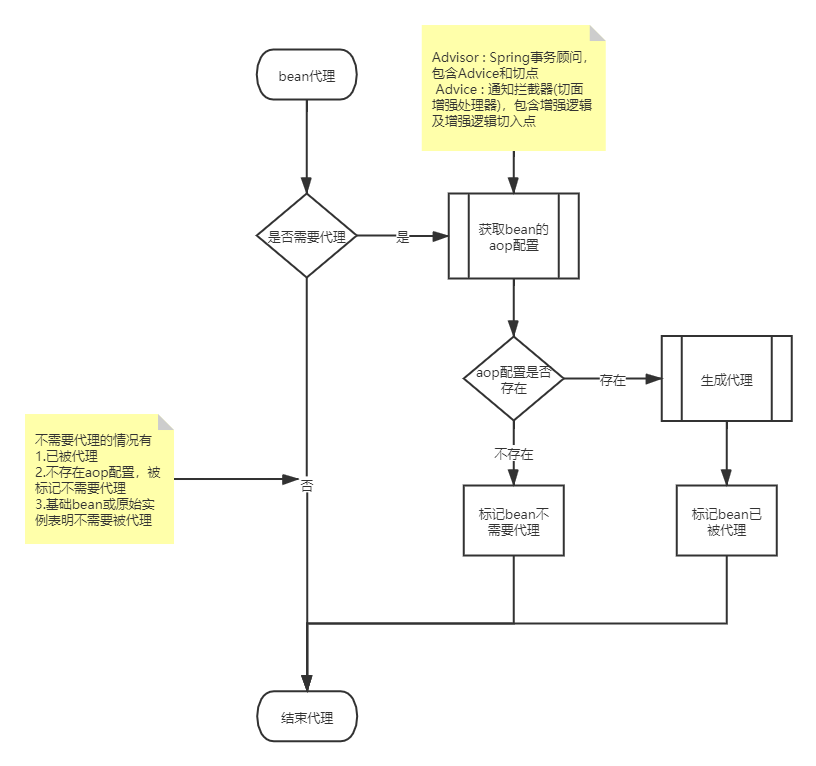
getAdvicesAndAdvisorsForBean方法
@Override
@Nullable
protected Object[] getAdvicesAndAdvisorsForBean(
Class<?> beanClass, String beanName, @Nullable TargetSource targetSource) {
List<Advisor> advisors = findEligibleAdvisors(beanClass, beanName);
if (advisors.isEmpty()) {
return DO_NOT_PROXY;
}
return advisors.toArray();
}
protected List<Advisor> findEligibleAdvisors(Class<?> beanClass, String beanName) {
List<Advisor> candidateAdvisors = findCandidateAdvisors();
List<Advisor> eligibleAdvisors = findAdvisorsThatCanApply(candidateAdvisors, beanClass, beanName);
extendAdvisors(eligibleAdvisors);
if (!eligibleAdvisors.isEmpty()) {
eligibleAdvisors = sortAdvisors(eligibleAdvisors);
}
return eligibleAdvisors;
}
获取所有的Advisor
findCandidateAdvisors用于获取所有的Advisor,默认获取直接配置的Advisor。即实现了Advisor的所有bean。
advisors.add(this.beanFactory.getBean(name, Advisor.class));
AnnotationAwareAspectJAutoProxyCreator重写了findCandidateAdvisors,不仅可以获取直接配置得Advisor,还可以获取用AspectJ间接定义的Advisor,即把AspectJ定义的bean转化为Advisor。
所以使用AnnotationAwareAspectJAutoProxyCreator可以同时支持两种配置AOP方式!
获取AspectJ注解间接定义的Advisor
if (this.advisorFactory.isAspect(beanType)) {
aspectNames.add(beanName);
AspectMetadata amd = new AspectMetadata(beanType, beanName);
if (amd.getAjType().getPerClause().getKind() == PerClauseKind.SINGLETON) {
MetadataAwareAspectInstanceFactory factory =
new BeanFactoryAspectInstanceFactory(this.beanFactory, beanName);
List<Advisor> classAdvisors = this.advisorFactory.getAdvisors(factory);
if (this.beanFactory.isSingleton(beanName)) {
this.advisorsCache.put(beanName, classAdvisors);
}
else {
this.aspectFactoryCache.put(beanName, factory);
}
advisors.addAll(classAdvisors);
}
else {
// Per target or per this.
if (this.beanFactory.isSingleton(beanName)) {
throw new IllegalArgumentException("Bean with name '" + beanName +
"' is a singleton, but aspect instantiation model is not singleton");
}
MetadataAwareAspectInstanceFactory factory =
new PrototypeAspectInstanceFactory(this.beanFactory, beanName);
this.aspectFactoryCache.put(beanName, factory);
advisors.addAll(this.advisorFactory.getAdvisors(factory));
}
}
}
查找过滤合适的Advisor
findAdvisorsThatCanApply用于查找可用的Advisor,遍历所有的Advisor,使用Advisor的PointCut执行匹配方法,对bean Class的方法挨个进行匹配,能匹配到说明该Advisor合格,加入到返回结果中,这里只展示了其中一种切点的处理逻辑–PointcutAdvisor。
public static boolean canApply(Pointcut pc, Class<?> targetClass, boolean hasIntroductions) {
Assert.notNull(pc, "Pointcut must not be null");
if (!pc.getClassFilter().matches(targetClass)) {
return false;
}
MethodMatcher methodMatcher = pc.getMethodMatcher();
if (methodMatcher == MethodMatcher.TRUE) {
// No need to iterate the methods if we're matching any method anyway...
return true;
}
IntroductionAwareMethodMatcher introductionAwareMethodMatcher = null;
if (methodMatcher instanceof IntroductionAwareMethodMatcher) {
introductionAwareMethodMatcher = (IntroductionAwareMethodMatcher) methodMatcher;
}
Set<Class<?>> classes = new LinkedHashSet<>();
if (!Proxy.isProxyClass(targetClass)) {
classes.add(ClassUtils.getUserClass(targetClass));
}
classes.addAll(ClassUtils.getAllInterfacesForClassAsSet(targetClass));
for (Class<?> clazz : classes) {
Method[] methods = ReflectionUtils.getAllDeclaredMethods(clazz);
for (Method method : methods) {
if (introductionAwareMethodMatcher != null ?
introductionAwareMethodMatcher.matches(method, targetClass, hasIntroductions) :
methodMatcher.matches(method, targetClass)) {
return true;
}
}
}
return false;
}
分别根据每个advisor pointCut的classFilter和MyMethodMatcher进行匹配。
过滤规则扩展
直接实现Advisor,和实现Advisor的扩展接口有什么区别?
Advisor是顶级接口,其实器残缺的,没有给出过滤匹配的方式
扩展接口IntroductionAdvisor和PointcutAdvisor。
Advisor没有过滤匹配规则,会匹配所有bean(不包含特殊bean)
IntroductionAdvisor给出了class类型过滤方式,会匹配限定类型的bean
PointcutAdvisor给出了class类型+方法匹配过滤方式,会匹配限定类型限定方法的bean。
显然PointcutAdvisor功能最强大,适用性和实用性最强
public static boolean canApply(Advisor advisor, Class<?> targetClass, boolean hasIntroductions) {
if (advisor instanceof IntroductionAdvisor) {
return ((IntroductionAdvisor) advisor).getClassFilter().matches(targetClass);
}
else if (advisor instanceof PointcutAdvisor) {
PointcutAdvisor pca = (PointcutAdvisor) advisor;
return canApply(pca.getPointcut(), targetClass, hasIntroductions);
}
else {
// It doesn't have a pointcut so we assume it applies.
return true;
}
}
对于Aspect扩展
extendAdvisors(eligibleAdvisors);
@Override
protected void extendAdvisors(List<Advisor> candidateAdvisors) {
AspectJProxyUtils.makeAdvisorChainAspectJCapableIfNecessary(candidateAdvisors);
}
public static boolean makeAdvisorChainAspectJCapableIfNecessary(List<Advisor> advisors) {
// Don't add advisors to an empty list; may indicate that proxying is just not required
if (!advisors.isEmpty()) {
boolean foundAspectJAdvice = false;
for (Advisor advisor : advisors) {
// Be careful not to get the Advice without a guard, as this might eagerly
// instantiate a non-singleton AspectJ aspect...
if (isAspectJAdvice(advisor)) {
foundAspectJAdvice = true;
break;
}
}
if (foundAspectJAdvice && !advisors.contains(ExposeInvocationInterceptor.ADVISOR)) {
advisors.add(0, ExposeInvocationInterceptor.ADVISOR);
return true;
}
}
return false;
}
如果是sAspectJAdvice,那么添加一个advisor,ExposeInvocationInterceptor这个的用处后面看
生成代理对象及代理执行
使用可用的Advisor和当前bean对象生成动态代理对象
if (specificInterceptors != DO_NOT_PROXY) {
//代码当前bean被代理
this.advisedBeans.put(cacheKey, Boolean.TRUE);
Object proxy = createProxy(
bean.getClass(), beanName, specificInterceptors, new SingletonTargetSource(bean));
this.proxyTypes.put(cacheKey, proxy.getClass());
return proxy;
}
ProxyFactory proxyFactory = new ProxyFactory();
Advisor[] advisors = buildAdvisors(beanName, specificInterceptors);
proxyFactory.getProxy(getProxyClassLoader());createAopProxy().getProxy(classLoader);
createAopProxy用于创建代理类,进入源码可以看到支持两种代理方式,其中JDK动态代理需要bean实现接口。
public AopProxy createAopProxy(AdvisedSupport config) throws AopConfigException {
if (config.isOptimize() || config.isProxyTargetClass() || hasNoUserSuppliedProxyInterfaces(config)) {
Class<?> targetClass = config.getTargetClass();
if (targetClass == null) {
throw new AopConfigException("TargetSource cannot determine target class: " +
"Either an interface or a target is required for proxy creation.");
}
if (targetClass.isInterface() || Proxy.isProxyClass(targetClass)) {
return new JdkDynamicAopProxy(config);
}
return new ObjenesisCglibAopProxy(config);
}
else {
return new JdkDynamicAopProxy(config);
}
}
注意这里有有个坑,不能仅仅看类是否有继承接口,还要看一个配置
proxyTargetClass
true
目标对象实现了接口 – 使用CGLIB代理机制
目标对象没有接口(只有实现类) – 使用CGLIB代理机制
false
目标对象实现了接口 – 使用JDK动态代理机制(代理所有实现了的接口)
目标对象没有接口(只有实现类) – 使用CGLIB代理机制

可见如果proxyTargetClass是true,那么不管什么类都会使用cglib代理,只有目标类本身就接口/代理类才会使用jdk代理

JDK动态代理
public Object getProxy(@Nullable ClassLoader classLoader) {
if (logger.isTraceEnabled()) {
logger.trace("Creating JDK dynamic proxy: " + this.advised.getTargetSource());
}
Class<?>[] proxiedInterfaces = AopProxyUtils.completeProxiedInterfaces(this.advised, true);
findDefinedEqualsAndHashCodeMethods(proxiedInterfaces);
return Proxy.newProxyInstance(classLoader, proxiedInterfaces, this);
}
是不是熟悉了,和手动定义JDK动态代理一样,对于jdk动态代理的拦截器InvocationHandler就是其本身
核心就是
Proxy.newProxyInstance(clazz.getClassLoader(), new Class<?>[]{clazz}, invocationHandler)。
再来看看核心方法invoke
// Get the interception chain for this method.
List<Object> chain = this.advised.getInterceptorsAndDynamicInterceptionAdvice(method, targetClass);
// Check whether we have any advice. If we don't, we can fallback on direct
// reflective invocation of the target, and avoid creating a MethodInvocation.
if (chain.isEmpty()) {
// We can skip creating a MethodInvocation: just invoke the target directly
// Note that the final invoker must be an InvokerInterceptor so we know it does
// nothing but a reflective operation on the target, and no hot swapping or fancy proxying.
Object[] argsToUse = AopProxyUtils.adaptArgumentsIfNecessary(method, args);
retVal = AopUtils.invokeJoinpointUsingReflection(target, method, argsToUse);
}
else {
// We need to create a method invocation...
MethodInvocation invocation =
new ReflectiveMethodInvocation(proxy, target, method, args, targetClass, chain);
// Proceed to the joinpoint through the interceptor chain.
retVal = invocation.proceed();
}
从Advisor中获取拦截器,然后生成一个连接点(ReflectiveMethodInvocation),包含链接器和代理信息,执行连接点的proceed方法,会链式调用拦截器,执行所有的切面代码。
public Object proceed() throws Throwable {
// We start with an index of -1 and increment early.
if (this.currentInterceptorIndex == this.interceptorsAndDynamicMethodMatchers.size() - 1) {
return invokeJoinpoint();
}
Object interceptorOrInterceptionAdvice =
this.interceptorsAndDynamicMethodMatchers.get(++this.currentInterceptorIndex);
if (interceptorOrInterceptionAdvice instanceof InterceptorAndDynamicMethodMatcher) {
// Evaluate dynamic method matcher here: static part will already have
// been evaluated and found to match.
InterceptorAndDynamicMethodMatcher dm =
(InterceptorAndDynamicMethodMatcher) interceptorOrInterceptionAdvice;
Class<?> targetClass = (this.targetClass != null ? this.targetClass : this.method.getDeclaringClass());
if (dm.methodMatcher.matches(this.method, targetClass, this.arguments)) {
return dm.interceptor.invoke(this);
}
else {
// Dynamic matching failed.
// Skip this interceptor and invoke the next in the chain.
return proceed();
}
}
else {
// It's an interceptor, so we just invoke it: The pointcut will have
// been evaluated statically before this object was constructed.
return ((MethodInterceptor) interceptorOrInterceptionAdvice).invoke(this);
}
}
@Override
public Object invoke(MethodInvocation invocation) throws Throwable {
System.out.println("go go go MyAdvisor process!!!");
return invocation.proceed();
}
切面执行完毕后会继续调用ReflectiveMethodInvocation的invoke方法,currentInterceptorIndex自增,执行匹配到的Advice,执行完毕执行invokeJoinpoint方法
注意点
jdk代理是对接口做的代理,匹配advice时,时根据接口
例如根据注解匹配,注解值放在子类上时无效的,需要放到接口上
例如
public interface ITestService {
@MyAnnotation
void test();
}
ExposeInvocationInterceptor的作用是什么
我们前面知道了,如果有注解间接定义的advisor,那么会添加一个ExposeInvocationInterceptor到首位
第一个执行的拦截器就会是ExposeInvocationInterceptor
从英文名字,顾名思义,暴露调用器的拦截器。
其就是起了暴露一个调用器作用的拦截器。
1、那么其暴露了什么调用器?
2、是如何暴露的,通过什么方法实现?
3、暴露给谁?
4、在什么时候起到拦截作用?
调用链首先调用此ExposeInvocationInterceptor拦截器的invoke方法,将MethodInvocation mi 设置到
ThreadLocal invocation 里面
@Override
public Object invoke(MethodInvocation mi) throws Throwable {
MethodInvocation oldInvocation = invocation.get();
invocation.set(mi);
try {
return mi.proceed();
}
finally {
invocation.set(oldInvocation);
}
}
至于为什么要把MethodInvocation塞到threadLocal中 invocation中
是因为通过注解@Aspectj定义的advise执行时,其对应的接口没有MethodInvocation这个参数
例如前置执行器
@Override
public Object invoke(MethodInvocation mi) throws Throwable {
this.advice.before(mi.getMethod(), mi.getArguments(), mi.getThis());
return mi.proceed();
}
void before(Method method, Object[] args, @Nullable Object target) throws Throwable;
但是又需要使用,因此需要使用threadLocal进行传递
@Override
public void before(Method method, Object[] args, @Nullable Object target) throws Throwable {
invokeAdviceMethod(getJoinPointMatch(), null, null);
}
@Nullable
protected JoinPointMatch getJoinPointMatch() {
MethodInvocation mi = ExposeInvocationInterceptor.currentInvocation();
if (!(mi instanceof ProxyMethodInvocation)) {
throw new IllegalStateException("MethodInvocation is not a Spring ProxyMethodInvocation: " + mi);
}
return getJoinPointMatch((ProxyMethodInvocation) mi);
}
那么获取joinpoint是为了干什么
例如有一个前置执行方法
@Before(value = "execution(public * test(int)) && args(a)")
public void before(JoinPoint joinPoint,int a){
System.out.println("------------------hello 方法执行前-------------------");
}
需要传参,joinPoint就是从MethodInvocation中获取
CGLIB动态代理类
Enhancer enhancer = createEnhancer();
if (classLoader != null) {
enhancer.setClassLoader(classLoader);
if (classLoader instanceof SmartClassLoader &&
((SmartClassLoader) classLoader).isClassReloadable(proxySuperClass)) {
enhancer.setUseCache(false);
}
}
enhancer.setSuperclass(proxySuperClass);
enhancer.setInterfaces(AopProxyUtils.completeProxiedInterfaces(this.advised));
enhancer.setNamingPolicy(SpringNamingPolicy.INSTANCE);
enhancer.setStrategy(new ClassLoaderAwareGeneratorStrategy(classLoader));
Callback[] callbacks = getCallbacks(rootClass);
Class<?>[] types = new Class<?>[callbacks.length];
for (int x = 0; x < types.length; x++) {
types[x] = callbacks[x].getClass();
}
// fixedInterceptorMap only populated at this point, after getCallbacks call above
enhancer.setCallbackFilter(new ProxyCallbackFilter(
this.advised.getConfigurationOnlyCopy(), this.fixedInterceptorMap, this.fixedInterceptorOffset));
enhancer.setCallbackTypes(types);
// Generate the proxy class and create a proxy instance.
return createProxyClassAndInstance(enhancer, callbacks);
与jdk自然不同,用的是cglib创建代理的方式
生效的callback可能有多个,这里看 DynamicUnadvisedInterceptor
@Override
@Nullable
public Object intercept(Object proxy, Method method, Object[] args, MethodProxy methodProxy) throws Throwable {
Object oldProxy = null;
boolean setProxyContext = false;
Object target = null;
TargetSource targetSource = this.advised.getTargetSource();
try {
if (this.advised.exposeProxy) {
// Make invocation available if necessary.
oldProxy = AopContext.setCurrentProxy(proxy);
setProxyContext = true;
}
// Get as late as possible to minimize the time we "own" the target, in case it comes from a pool...
target = targetSource.getTarget();
Class<?> targetClass = (target != null ? target.getClass() : null);
List<Object> chain = this.advised.getInterceptorsAndDynamicInterceptionAdvice(method, targetClass);
Object retVal;
// Check whether we only have one InvokerInterceptor: that is,
// no real advice, but just reflective invocation of the target.
if (chain.isEmpty() && Modifier.isPublic(method.getModifiers())) {
// We can skip creating a MethodInvocation: just invoke the target directly.
// Note that the final invoker must be an InvokerInterceptor, so we know
// it does nothing but a reflective operation on the target, and no hot
// swapping or fancy proxying.
Object[] argsToUse = AopProxyUtils.adaptArgumentsIfNecessary(method, args);
retVal = methodProxy.invoke(target, argsToUse);
}
else {
// We need to create a method invocation...
retVal = new CglibMethodInvocation(proxy, target, method, args, targetClass, chain, methodProxy).proceed();
}
retVal = processReturnType(proxy, target, method, retVal);
return retVal;
}
finally {
if (target != null && !targetSource.isStatic()) {
targetSource.releaseTarget(target);
}
if (setProxyContext) {
// Restore old proxy.
AopContext.setCurrentProxy(oldProxy);
}
}
}
执行proceed的流程与jdk的流程基本相同。
执行时生成的连接点为CglibMethodInvocation,是JDK动态代理连接点ReflectiveMethodInvocation的子类,执行的还是ReflectiveMethodInvocation的proceed方法
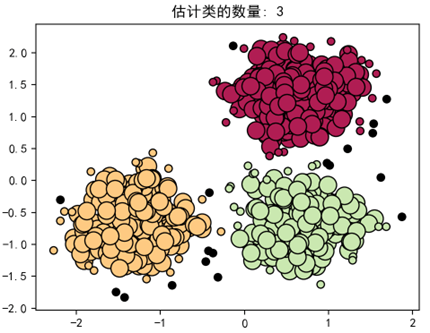




![[附源码]SSM计算机毕业设计电子病历信息管理系统JAVA](https://img-blog.csdnimg.cn/ef1a6f7297e94e8ba0c7f955cb57666a.png)

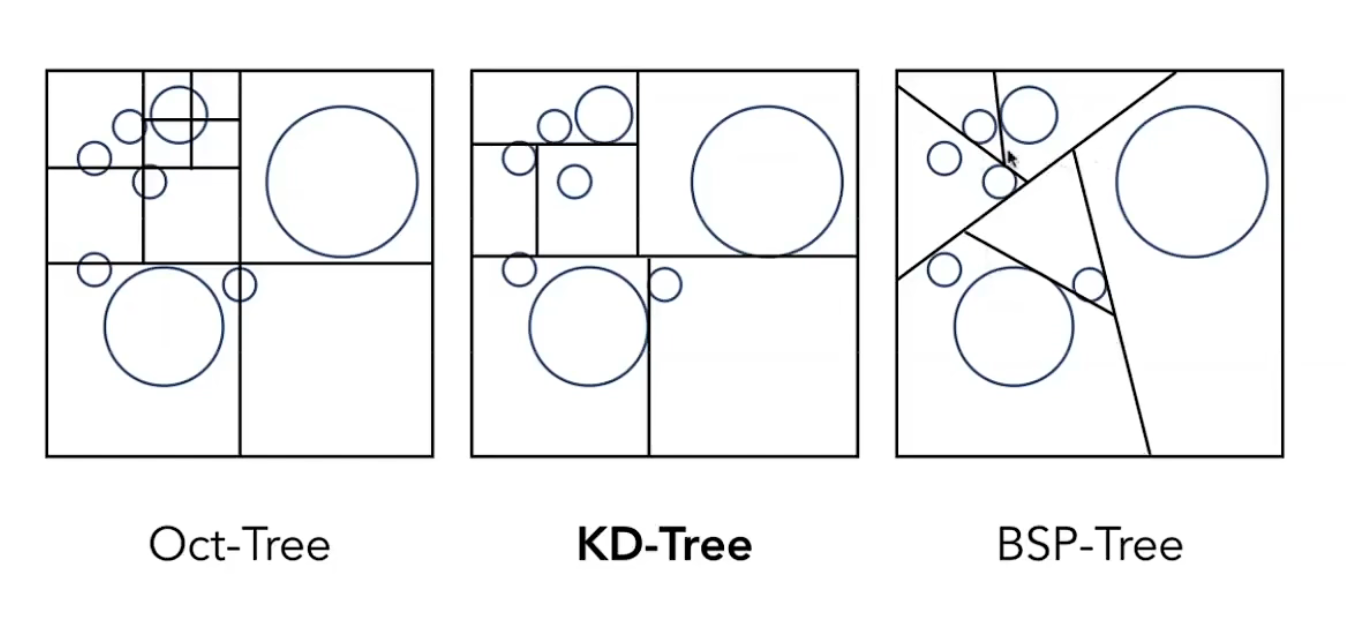
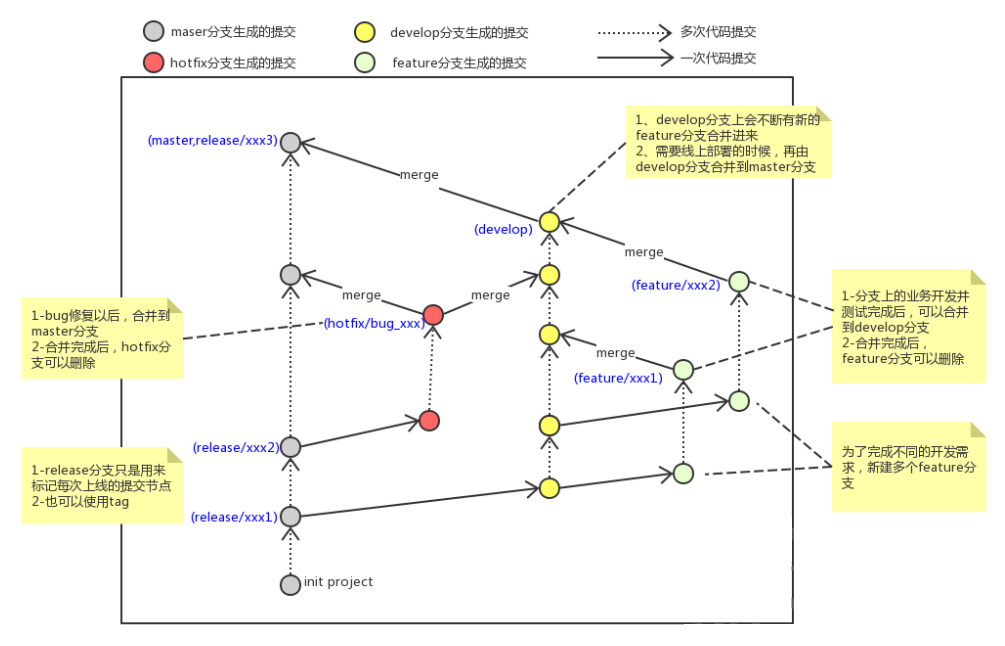
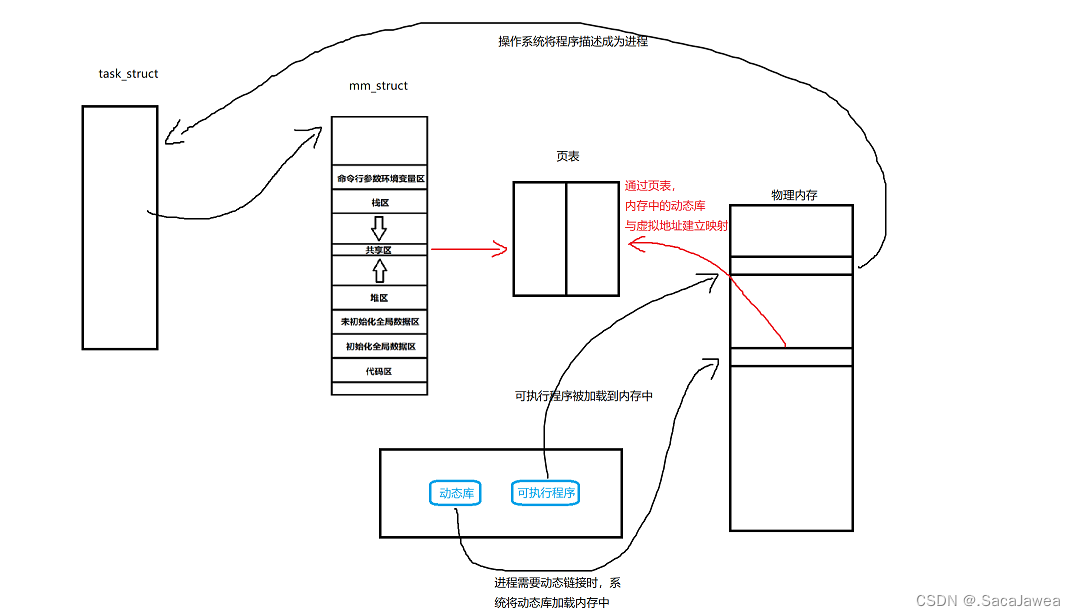

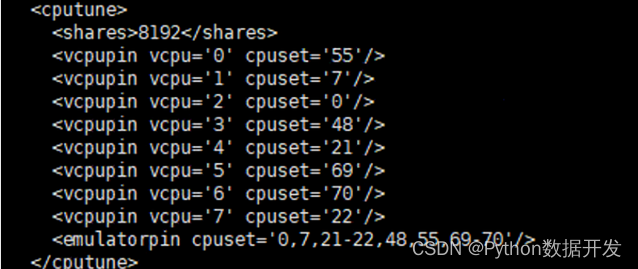


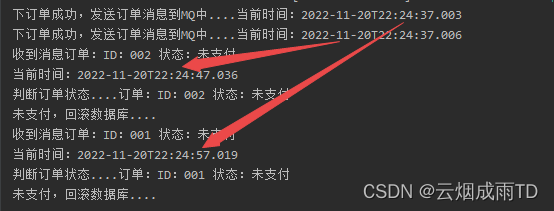
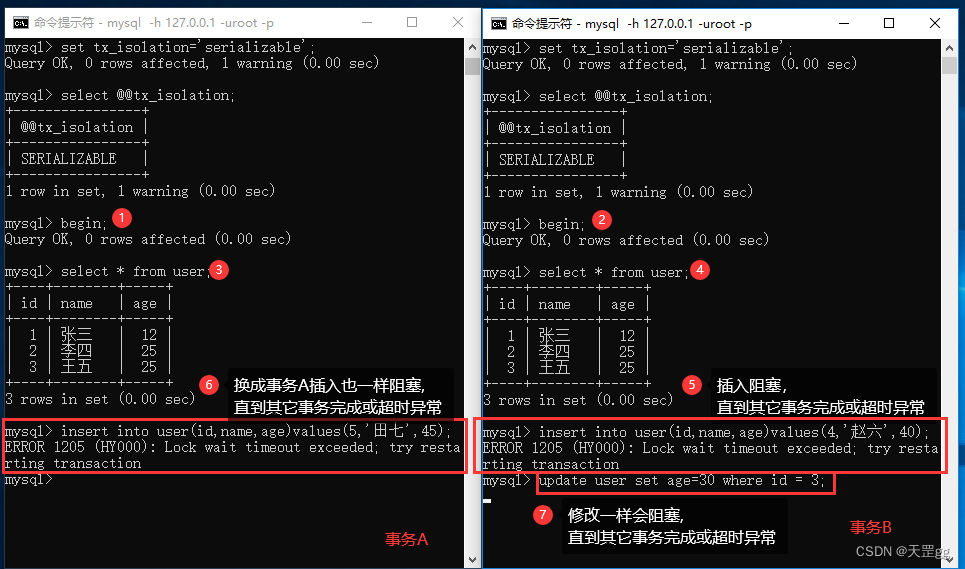
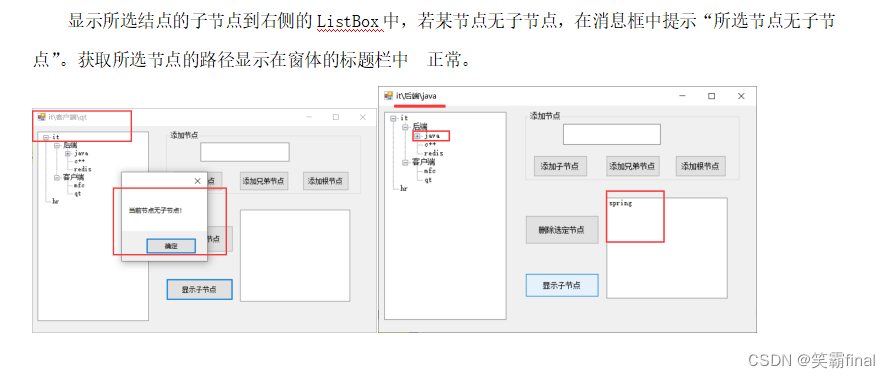
![[附源码]java毕业设计四六级考试管理系统](https://img-blog.csdnimg.cn/8bd26e21ce9f4b1f96b83f4f545fcba8.png)
